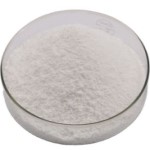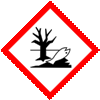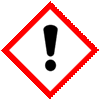BHT Butylated Hydroxytoluene SDS of Suppliers Exporters, Manufacturers
BHT Butylated Hydroxytoluene
CAS Number: 128-37-0 Suppliers Exporters, Manufacturers

Please visit Main Page of BHT Butylated Hydroxytoluene USP NF BP Ph Eur FCC Food Grade Manufacturers.
BHT Butylated Hydroxytoluene SDS GHS, Safety Data Sheet
MSDS Sheet 08-May-22
1. Product Identification
Product Name & Other Names: BHT; 2,6-Di-tertbutyl-p-cresol; 2,6-Bis(1,1-dimethylethyl)-4-methylphenol; 2,6-Di-tert-butyl-1-hydroxy-4-methylbenzene; 2,6-Di-tertbutyl-p-methylphenol; 3,5-Di-tert-butyl-4-hydroxytoluene; 4-Methyl-2,6-di-tert-butylphenol; Butylated hydroxytoluene; Butylhydroxytoluene, p-Cresol 2,6-di-tert-butyl-
CAS No.: 128-37-0, (126-37-0) **
EINECS: EC Number: 204-881-4
Relevant uses and uses advised against (if any): Industrial use only.
Supplier: As per letterhead.
2. Hazards Identification
GHS, Globally Harmonized System Classification in accordance with 29 CFR 1910
Classification according to Regulation (EC) No 1272/2008
Acute toxicity, oral Category 4, H302
Skin corrosion/irritation Category 2, H315
Serious eye damage/eye irritation Category 2A, H319
Specific target organ toxicity, single exposure; Respiratory tract irritation Category 3, H335
Hazardous to the aquatic environment, long-term hazard Category 1, H410
Labeling according to GHS & Regulation (EC) No 1272/2008
GHS Label Elements  Aquatic Toxicity |
GHS Label Elements |
Signal Words: Warning
Hazard statements:
H302: Harmful if swallowed.
H315: Causes skin irritation.
H319: Causes serious eye irritation.
H335: May cause respiratory irritation.
H410: Very Toxic to aquatic life with long lasting effects.
Precautionary statements:
P260: Do not breathe dust/fume/gas/mist/vapors/spray.
P262: Do not get in eyes, on skin, or on clothing.
P264 Wash thoroughly after handling.
P270: Do not eat, drink or smoke when using this product.
P273: Avoid release to the environment.
P280: Wear protective gloves/protective clothing/eye protection/face protection.
P314: Get medical advice/attention if you feel unwell.
P330: Rinse mouth.
P301+P312: IF SWALLOWED: Call a POISON CENTER or doctor/ physician if you feel unwell.
P302+P352: IF ON SKIN: Wash with plenty of soap and water.
P305+P351+P338: IF IN EYES: Rinse cautiously with water for several minutes. Remove contact lenses, if present and easy to do. Continue rinsing.
P362: Take off contaminated clothing and wash before reuse.
P332+P313: If skin irritation occurs: Get medical advice/attention.
P337+P313: If eye irritation persists: Get medical advice/ attention.
3. Composition/Information on Ingredients
Product Name & Other Names: BHT; 2,6-Di-tertbutyl-p-cresol; 2,6-Bis(1,1-dimethylethyl)-4-methylphenol; 2,6-Di-tert-butyl-1-hydroxy-4-methylbenzene; 2,6-Di-tertbutyl-p-methylphenol; 3,5-Di-tert-butyl-4-hydroxytoluene; 4-Methyl-2,6-di-tert-butylphenol; Butylated hydroxytoluene; Butylhydroxytoluene, p-Cresol 2,6-di-tert-butyl-
CAS No.: 128-37-0, (126-37-0) **
EINECS: EC Number: 204-881-4
4. First Aid Measures
Always seek medical attention after first aid measures are provided.
Inhalation: Remove to fresh air. If not breathing, give artificial respiration. If breathing is difficult, give oxygen. Get medical attention.
Ingestion: Never give anything by mouth to an unconscious person. Get medical attention.
Skin Contact: Wipe off excess material from skin then immediately flush skin with plenty of water for at least 15 minutes. Remove contaminated clothing and shoes. Get medical attention. Wash clothing before reuse. Thoroughly clean shoes before reuse.
Eye Contact: Immediately flush eyes with plenty of water for at least 15 minutes, lifting lower and upper eyelids occasionally. Get medical attention immediately.
5. Fire Fighting Measures
Flammability of the Product: May be combustible at elevated temperature...
Auto-Ignition Temperature: 470C (878F).
Flash Points: CLOSED CUP: 118.3C (244.9F).
Products of Combustion: Carbon dioxide, Carbon monoxide, Hydrogen Chlorides, Fumes.
Fire Extinguishing Media: Use any means suitable for extinguishing surrounding fire. Use water spray, alcohol-resistant foam, dry chemical, or carbon dioxide.
Extinguishing Media Not recommended: Avoid using solid water jet as it may scatter the fire.
Special Information: In the event of a fire, wear full protective clothing and NIOSH-approved self-contained breathing apparatus with full face piece operated in the pressure demand or other positive pressure mode. At elevated temperatures under fire conditions, it may produce toxic or irritating fumes. Fire-extinguishing work is done from the windward and the suitable fire-extinguishing method according to the surrounding situation is used. Uninvolved persons should evacuate to a safe place.
6. Accidental Release Measures
Personal precautions, protective equipment, and emergency procedures: Avoid breathing dust/fumes/gas/mist/vapors/spray. Ensure adequate ventilation. Use individual protective equipment (waterproof boots, suitable protective clothing, safety glasses, etc.). Do not approach facing the wind.
Environmental precautions: Do not let the product enter drains, soil, or water sources.
Methods and materials used for containment cleanup procedures and Storage: Avoid touching the spilled material. Do not let the product enter drains. Use a shovel to put the material into a convenient waste disposal container. Do not contaminate the environment.
7. Handling and Storage
Precautions for safe handling: Apply according to good manufacturing and industrial hygiene practices. Ensure proper ventilation. In case of insufficient ventilation, wear suitable respiratory equipment. Wash thoroughly after handling. Do not drink, eat, or smoke while handling. Avoid contact with skin, eyes, and clothing. Minimize dust generation. Avoid breathing dust/fumes/gas/mist/vapors/spray. Use individual protective equipment (waterproof boots, suitable protective clothing, safety glasses, etc.).
Conditions for safe storage, including any incompatibilities: Store in cool, dry, and ventilated area away from heat sources and protected from sunlight in tightly closed original container. Keep air contact to a minimum. Do not leave the material container open. Store protected from heat, sparks and ignition sources and incompatible materials. Do not store with incompatible materials like strong oxidizing agents, reducing agents, metals, and acids.
8. Exposure Controls/Personal Protection
Airborne Exposure Limits: Although up to 10mg/m3 is prescribed in some regulations, better limit it to 2mg/m3.
Ventilation System: A system of local and/or general exhaust is recommended to keep employee exposures as low as possible.
Personal Respirators (NIOSH Approved): For conditions of use where exposure to dust or mist is apparent and engineering controls are not feasible, a particulate respirator may be worn.
Skin Protection: Wear protective gloves and clean body-covering clothing.
Eye Protection: Use chemical safety goggles and/or full-face shield where dusting or splashing of solutions is possible. Maintain eye wash fountain and quick-drench facilities in work area.
Other Control Measures: Maintain good housekeeping in work area. Handle in accordance with good industrial hygiene and safety practice.
9. Physical and Chemical Properties
Appearance: It is a white solid.
Odor: It has faint typical odor.
Odor threshold: No data found.
pH: No data found.
Relative density: 1.03 - 1.05 g/mL at 20C.
Boiling Point: 265C, 509F
Melting Point: 70 C, 158F
Flash point: No data found.
Auto-ignition temperature: No data found.
Decomposition temperature: No data found.
Upper/lower flammability or explosive limits: No data found.
Vapor pressure: No data found.
Vapor density: No data found.
Evaporation rate: No data found.
Flammability (solid, gas): No data found.
Partition coefficient: n-octanol/water: No data found.
Solubility: It is slightly soluble in water.
Viscosity: No data found.
Molecular Weight: 220.2
Molecular Formula: C15H24O
10. Stability and Reactivity
Stability: Stable under ordinary conditions of use and storage.
Hazardous Decomposition Products: It emits Carbon dioxide, Carbon monoxide, Hydrogen Chlorides & Fumes.
Hazardous Polymerization: Will not occur.
Incompatibilities: Strong oxidizing agents, reducing agents metals and acids.
Conditions to Avoid: Incompatibles and moisture.
Phenols are incompatible with strong reducing substances such as hydrides, nitrides, alkali metals, and sulfides.
Avoid use of aluminum, copper and brass alloys in storage and process equipment.
Heat is generated by the acid-base reaction between phenols and bases.
Phenols are sulfonated very readily (for example, by concentrated sulfuric acid at room temperature), these reactions generate heat.
Phenols are nitrated very rapidly, even by dilute nitric acid.
Nitrated phenols often explode when heated. Many of them form metal salts that tend toward detonation by mild shock.
Segregate from oleum, nitric acid and chlorosulfonic acid.
11. Toxicological Information
Toxicity data
ORL-RAT LD50 890 mg kg-1
ORL-MAM LD50 650 mg kg-1
Carcinogenic Effects: Not know as carcinogen.
Mutagenic Effects: Mutagenic for bacteria and/or yeast. Mutagenic for mammalian somatic cells. May cause damage to the following organs: blood, liver, central nervous system (CNS).
Teratogenic Effects: May cause adverse reproductive effects and birth defects.
Developmental Toxicity: Adverse reproductive effects have occurred in experimental animals.
12. Ecological Information
Toxicity to fish: LC50 - Oryzias latipes - 5,3 mg/l - 48 h
Toxicity to daphnia and other aquatic invertebrates: static test EC50 - Daphnia magna (Water flea) - 0,48 mg/l - 48 h
Toxicity to bacteria: Growth inhibition EC50 - Protozoa - 1,7 mg/l - 24 h
Environmental Toxicity: Low aquatic toxicity is expected.
Persistence and Degradability: No data found.
Mobility: No data found.
Bioaccumulation/ Accumulation: No data found.
Results of PBT and vPvB assessment: No data found.
13. Disposal Considerations
Whatever cannot be saved for recovery or recycling should be managed in an appropriate and approved waste disposal facility.
14. Transport Information
USA DOT & ADR/RID Europe Classification:
UN number: 3077
UN proper shipping name: ENVIRONMENTALLY HAZARDOUS SUBSTANCE, SOLID, N.O.S. (2,6-di-tert-Butyl-p-cresol)
Transport hazard class(es): 9
Packaging group: III
Canada TDG Classification:
UN number: 3077
UN proper shipping name: ENVIRONMENTALLY HAZARDOUS SUBSTANCE, SOLID, N.O.S. (2,6-di-tert-Butyl-p-cresol)
Transport hazard class(es): 9
Packaging group: III
IMDG/IMO & ICAO/IATA
UN number: 3077
UN proper shipping name: ENVIRONMENTALLY HAZARDOUS SUBSTANCE, SOLID, N.O.S. (2,6-di-tert-Butyl-p-cresol)
Transport hazard class(es): 9
Packaging group: III.
15. Regulatory Information
USA:
SARA 311/312 Hazards: See section 2.
California prop. 65:Contains no chemical subject to California Prop 65
Section 16 - Additional Information
DISCLAIMER: The information and recommendations set forth herein are presented in good faith and believed correct as of the date hereof. It is compiled from various sources, and it is not necessarily all inclusive nor fully adequate in every circumstance. In addition, these suggestions should not be confused with nor followed in violation of applicable laws, regulations, rules, or insurance requirements applicable. This MSDS sheet is intended only as a guide to the appropriate precautionary handling of the material by a professionally trained person using this product. Individuals receiving the information must exercise their independent judgment in determining its appropriateness for a particular purpose.
Please visit Technical Data Sheet of BHT Butylated Hydroxytoluene USP NF BP Ph Eur FCC Food Grade Suppliers.
BHA Butylated Hydroxyanisole CAS Number 25013-16-5, BHT Butylated Hydroxytoluene CAS Number 128-37-0 & TBHQ Tertiary Butyl Hydroquinone CAS Number 1948-33-0 Supplier Exporter, Manufacturer:
Annie Chemie P Ltd
Mumbai 4000010, INDIA
With Agents and offices in UAE, USA, Europe.
e-mail: info@anniechemie.com
Copyright and Usual Disclaimer is Applicable.
May 29, 2025
Exporters to USA, Canada, UK, Europe, UAE, Nigeria, Algeria, Turkey, Mexico, Brazil, Chile, Argentina, Australia, Dubai etc.
Perfection is made up of small things and that is a big thing.

